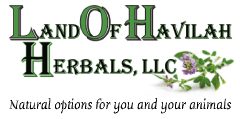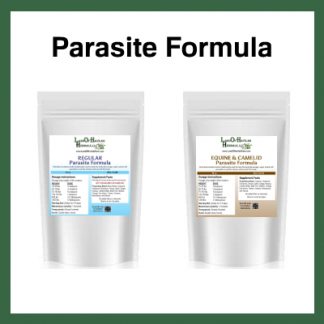I’m more than happy to share my feed mix recipes on my website, the only thing I require is for them to stay here. Please don’t post it on groups, forums, lists, another website, etc. Please feel free to post a link to this page on any other website, group, forum, etc. I want to make sure that people read about it here, as I keep this updated, etc. Thank you!
I don’t personally use Feed mix #1 anymore, since it was not economically feasible for me. I use mix #3 (see below).
When making changes to your animals feed regimen it is VERY IMPORTANT to do so GRADUALLY over a 2 week period. This is how I was taught to do it:
First week: 1/2 the new mix and 1/2 the old mix
Second week: 3/4 new mix to 1/4 old mix
Third week: switch completely over to the new mix
UPDATE (12/04/2012): I have not been sprouting mixes for a few months now, due to not having access to good quality whole barley. I still use Mix #3 along with Herbamins free choice in their mineral feeder (see my Goat Minerals page) instead of using the Top Dressings listed below – with great results.
You can sprout ANY of the mixes below, OR you can use them unsprouted. You will need to feed more than I mention here if the mix you choose is unsprouted.
The following grains listed are WHOLE grains, not rolled or crimped. Also, the protein of this first mix is 12.9%, optimally you should feed a protein between 12%-14% for dairy goats. Want to figure out the protein % of your homemade mix? Click here and I will teach you how:
Land of Havilah Feed Mix #1 (SPROUTED RECIPE):
I no longer use this mix, as it was not economically feasible. I now Feed mix #3 (recipe included below). I keep this mix (#1) on my website to give people just in case others would like to try it.
5# barley (11% protein) (*organic – organic is always non-GMO and no spray)
1# Austrian Winter Peas (22% protein) (*Non-GMO, no spray)
1# Wheat berries (10.8% protein) (*organic)
1/2# Millet (12% protein) (*Non-GMO, no spray)
2# Oats (12% protein) (*Non-GMO, no spray)
* This is nutritional information on my old source of feed
To see a video of my Feed Mix #3 Sprouted mix, click here.
Sprouting instructions:
I take the above mix, 1/4 cup to 1/2 cup of Raw Unfiltered Apple Cider Vinegar (I like Bragg’s brand), and soak it for 12-24 hours (I personally prefer 24 hours) in amounts that will last 1-2 days. I used to soak a larger amount that would last 3 days, but I was running into problems with mold. The reason: the barley I get is NOT washed and the non seed portions (flower heads, etc) seem to mold quickly because of this. I take a cotton pillow case (one of you blessed me with this idea, thanks!) put it in the bucket (like a liner), I put a glug of ACV in the bottom, then I put my dry grain mix into the pillow case, then I fill the pillow case lined bucket with water. Let this soak for a few hours, up to 24 hours. The Apple Cider Vinegar (ACV) helps prevent mold.
To drain easily, in the morning I place the pillowcase containing the soaked grains in my empty utility sink on top of a large bowl that I place upside down in the sink. I simply place the pillowcase on the inverted bowl and leave the top of the pillowcase hanging outside the sink to keep the pillowcase in place i.e. keep it from falling into the sink. That night at chore time (approximately 12 hours later) is just damp and the sprouts are just starting to peak out. 🙂 At this point I dump them into a bucket, place the bucket in a warm place, and allow them to continue sprouting till the next morning when I begin using them. They will be completely used up in one day.
You can also drain it this way, but it is more work: I place the pillowcase in a new bucket with a colander (or whatever) on the bottom. The water will drain out through the pillow case, leaving the grains. You can leave the grains in the pillow case to sprout, I prefer to transfer them into a bucket, as it is easier for me to dispense the grain out of a bucket. Put this in a warm place to sprout overnight – check for little sproutlings in the morning. 🙂
NOTE: Don’t waste the soaking water! It is rich in amino acids and has the ACV in it – I’d pour mine into their water trough each morning. They would fight over the bucket if I wasn’t not quick enough.
When you see the sprouts peeking out of some of the grains, you can start feeding it to the herd. Some grains sprout sooner than others, that is okay – the rest will begin soon. Notice that when you soak the grain it grows, as it has absorbed water. This means that you are feeding LESS than you will be if you are feeding the grain right out of the bag. That is okay, and in fact preferred. 🙂 Just keep an eye on their weight and adjust the amount to suit your herd/animal. My herd is perfect at the below amounts, but PLEASE keep an eye on the body condition of YOUR goats to customize the amounts given for your herd. :
Milking Does * 2 cups of sprouts, 1 handful of wheat bran (wet this down), and 1/2 # of Chaffhaye. I give them this same thing in both the morning and evening on the milk stand.
Dry Pregnant Does/Doelings *: Chaffhaye and hay, plus the herbs listed on my “Pregnant Doe Care” page.
Breeding bucks*: Organic alfalfa pellets or timothy pellets if his weight is low. Most of the time, my bucks do great on their hay ration only & free choice Thorvin Kelp & Herbamins, even in rut.
It is my opinion that unless a goat is pregnant or milking or both, it does not need grain. Feed it plenty of good quality hay (and pasture, if possible) instead. Keep an eye on its body condition and add organic alfalfa pellets, if necessary.
*plus the top dressings listed below
To any of the feed mixes listed here mix, you can add this as top dressing:
1 tsp. of whole flaxseed (*Non-GMO & no spray)
1 TBSP of comfrey leaf c/s (cut & sifted) or 1 tsp. of the powder.
1 TBSP of red raspberry leaf c/s or 1 tsp powder.
1-2 fresh carrots per feeding OR 1 tsp of carrot powder.
If you are feeding cut and sifted herbs instead of powdered herbs, change the amount from tsp (powdered) to TBSP (cut and sifted aka c/s).
Update (12/04/2012): See my Goat Minerals page to see what I have been implementing instead of having to use the Top Dressing mix listed here.
Having trouble with your goats not liking the sprouts? Try this mix instead:
Land of Havilah Feed Mix #3:
This is what I used from 2011-2014. This mix protein level (of grain) is 12.5% per pound:
3 parts Organic Whole Barley (11% protein)
3 parts Organic Whole Oats (12% protein)
1 part Black Oil Sunflower Seeds (BOSS) (13% protein)
It is easier to find quality oats than quality barley, so I have been using oats and BOSS and adding 1 part of Field Peas (Non-GMO and unsprayed).
I feed my milkers 1/2# – 1# of this unsprouted mix (try feeding 2 cups if sprouted). Keep an eye on their weight, since my girls don’t seem to need much, but you’re may need more.
Add 1 1/2# of organic alfalfa pellets if your hay is low in alfalfa, or if they need extra weight, etc.
I also feed my whole herd Herbamins to provide an entire spectrum of necessary nutrients.
Black Oil Sunflower Seeds – I finally found a source of Organic Black Oil Sunflower Seeds: Azure Standard. Check their site to see if they have delivery to your area.
Hay – I personally use an 50% alfalfa & 50% grass hay. If you can’t afford to do free choice hay, feed 4 pounds of hay per milker. If they clean it all up, then up the amount you give per day. Ideally, you should see a small amount left – that way you know they are not hungry, they had the perfect amount. 🙂 Alfalfa is King of Herbs, one of the best things you can feed your herd! It also gives their milk a wonderful, sweet taste. Since I generally feed a lower alfalfa content hay for all my animals, I supplement my milking Does with organic alfalfa pellets on the milk stand.
Thorvin Kelp for Animals this is organic and I keep it out available to them “free choice” (1-2# per pasture per day, depending on how many goats are in that pasture) – supplies minerals & flushes heavy metals from their system.
Raw and unfiltered Apple Cider Vinegar – I give this in their water. This helps dissolve the rock based minerals present in the water. Bragg’s name brand is a good one. I also put this in the soaking water when making sprouts.
Browsing/grazing – We allow our goats out into the Big Pasture when we are home. This gives them access to both meadow and lowland areas – different herbs grow in different soils. It allows them to “Self medicate” with the plants available on our land.
Clean fresh water morning and night.
Sources:
See my “Links & Discounts” page. I have single herbs and premixes available for sale through Land of Havilah Herbals.
DON’T FORGET TO CHECK OUT MY “GOAT MINERALS” PAGE. IT IS IMPORTANT TO MEET THEIR MINERAL NEEDS.


